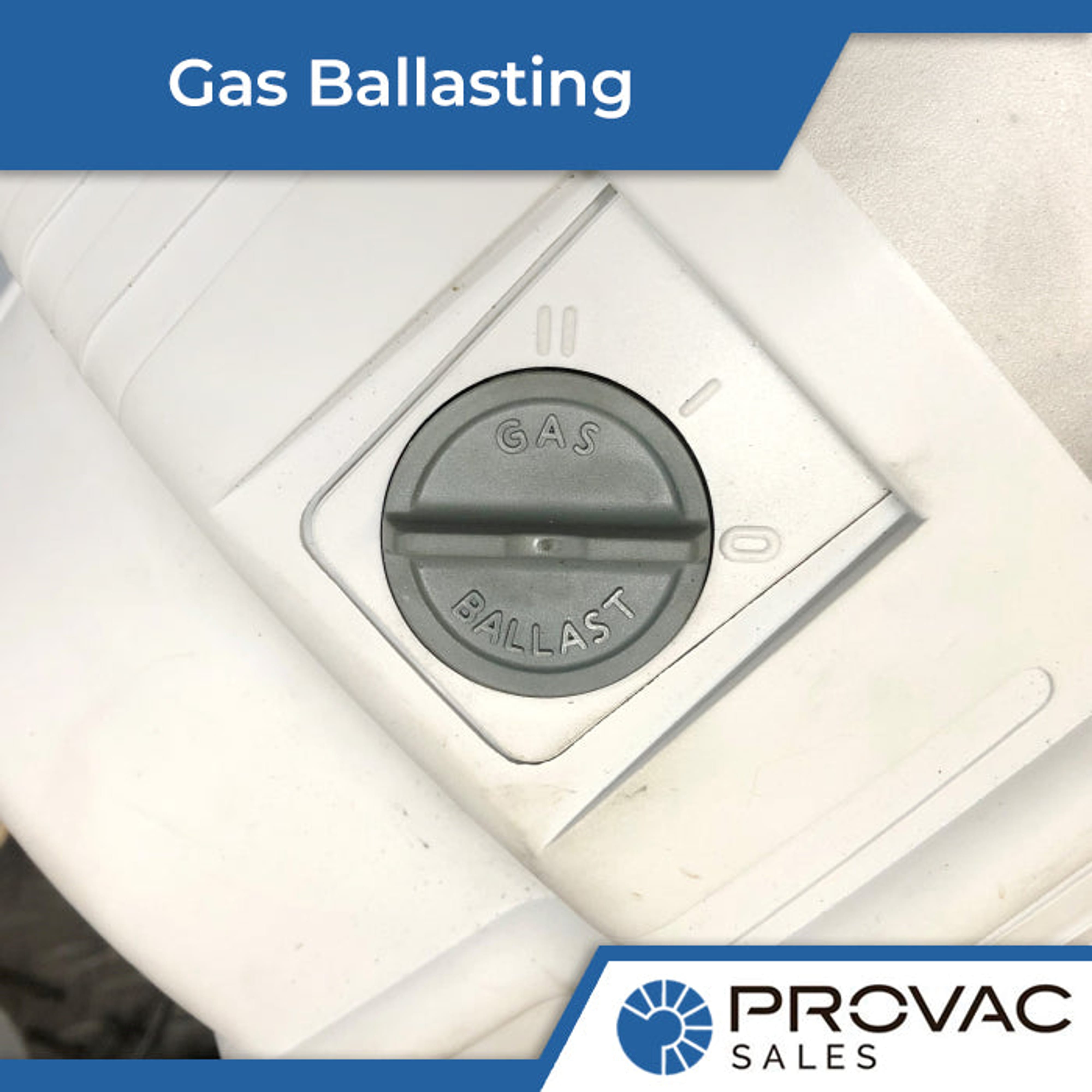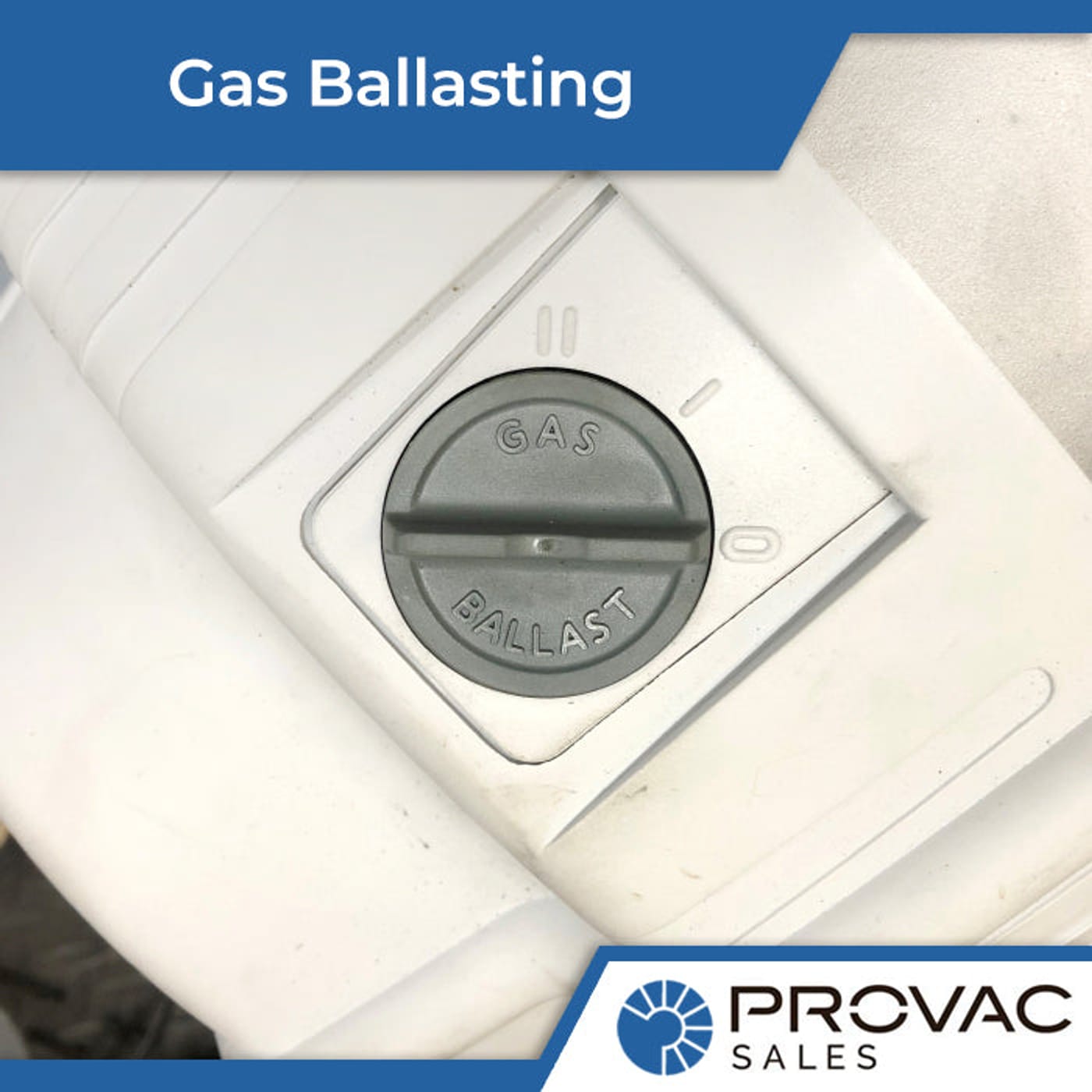Gas ballasting is a crucial technique used in vacuum technology to improve the performance and longevity of vacuum pumps. This process involves introducing a small amount of air or inert gas into the pump during operation to prevent condensation of vapors and extend the pump's capabilities.
Understanding gas ballasting is essential for anyone working with vacuum systems, as it can significantly impact the efficiency and effectiveness of vacuum processes.
What is Gas Ballasting?
Gas ballasting refers to the controlled introduction of a gas, typically air, into the compression chamber of a vacuum pump. This process is facilitated by a gas ballast valve, which allows the operator to regulate the flow of gas into the pump. The primary purpose of gas ballasting is to prevent the condensation of vapors within the pump, which can contaminate the pump oil and reduce its performance.
The Gas Ballast Valve
Function and Operation
The gas ballast valve on a vacuum pump is a critical component that allows for the introduction of atmospheric air or inert gas into the pump's compression chamber. This valve can be opened or closed depending on the specific requirements of the vacuum process.
When to Open or Close the Gas Ballast Valve
Determining when to open or close the gas ballast valve is crucial for optimal pump performance:
- Open the valve during initial pump-down, especially when dealing with moisture-laden systems.
- Close the valve when reaching lower pressures (typically around 1-2 Torr) to achieve the pump's ultimate vacuum.
Benefits of Gas Ballasting
Preventing Oil Contamination
One of the primary benefits of gas ballasting is the prevention of oil contamination. The gas ballast helps avoid condensation that could mix with and degrade the pump oil by keeping vapors in their gaseous state.
Improving Vapor Handling
Gas ballasting enhances a vacuum pump's ability to handle vapors, making it particularly useful in applications involving the removal of moisture or other condensable gases.
Extending Pump Life
Gas ballasting can significantly extend the operational life of a vacuum pump by reducing oil contamination and preventing the buildup of condensates.
When to Use Gas Ballasting
Initial System Evacuation
Opening the gas ballast valve is crucial during the initial evacuation of a system, especially one that may contain moisture. This helps remove water vapor efficiently without allowing it to condense inside the pump.
Handling Condensable Vapors
Gas ballasting is essential in processes involving condensable vapors, such as distillation or freeze-drying, to maintain pump performance and prevent oil contamination.
Pump Maintenance
Gas ballasting can also be used as a maintenance technique to help clean the pump oil of accumulated contaminants.
Proper Use of Gas Ballasting
Opening the Gas Ballast Valve
Open the gas ballast valve when starting a vacuum process, especially with a potentially contaminated or moisture-laden system. This allows for the efficient removal of vapors during the initial pump-down phase.
Closing the Gas Ballast Valve
Close the gas ballast valve as the system pressure decreases, typically around 1-2 Torr. This allows the pump to reach its ultimate vacuum level.
Monitoring Pump Performance
Pay attention to signs indicating the need for gas ballasting, such as vacuum pump smoking or not pulling enough vacuum.
Impact on Vacuum Performance
Ultimate Pressure
While gas ballasting is beneficial for vapor handling, it can limit the ultimate pressure achievable by the pump. This is why the valve is typically closed at lower pressures.
Pumping Speed
Gas ballasting can affect the pumping speed, particularly at lower pressures. However, this trade-off is often necessary to maintain proper pump function in the presence of vapors.
Applications Benefiting from Gas Ballasting
Freeze Drying
In freeze-drying processes, gas ballasting is crucial for efficiently removing water vapor without contaminating the pump oil.
Vacuum Distillation
Gas ballasting helps maintain pump performance in vacuum distillation processes with various vapors.
Food Preservation
Gas ballasting can help remove moisture efficiently in vacuum packaging for food preservation, ensuring better seal quality and longer shelf life.
Troubleshooting Gas Ballast Issues
Oil Leaks
If you notice oil leaking or spitting from your vacuum pump, it may indicate improper use of the gas ballast or other pump issues.
Unusual Noises
Rattling or unusual noises from your vacuum pump could be related to gas ballast operation or other mechanical problems.
Reduced Performance
If your pump is not achieving the expected vacuum levels, improper gas ballasting could contribute.
Maintenance Considerations
Regular Oil Changes
Regular oil changes are necessary to maintain pump performance and longevity even with proper gas ballasting.
Valve Inspection
Periodically inspect and clean the gas ballast valve to ensure proper operation.
System Leaks
Be aware that gas ballasting can mask small leaks in your vacuum system. Regular leak checking is essential for optimal performance.
Gas ballasting is a vital technique in vacuum technology that significantly enhances the performance and lifespan of vacuum pumps. By understanding when and how to use the gas ballast valve, operators can ensure efficient vapor handling, prevent oil contamination, and maintain optimal pump performance.
Whether you're working with rotary vane pumps, scroll pumps, or other types of vacuum pumps, proper gas ballasting techniques are essential for achieving the best results in your vacuum processes.





